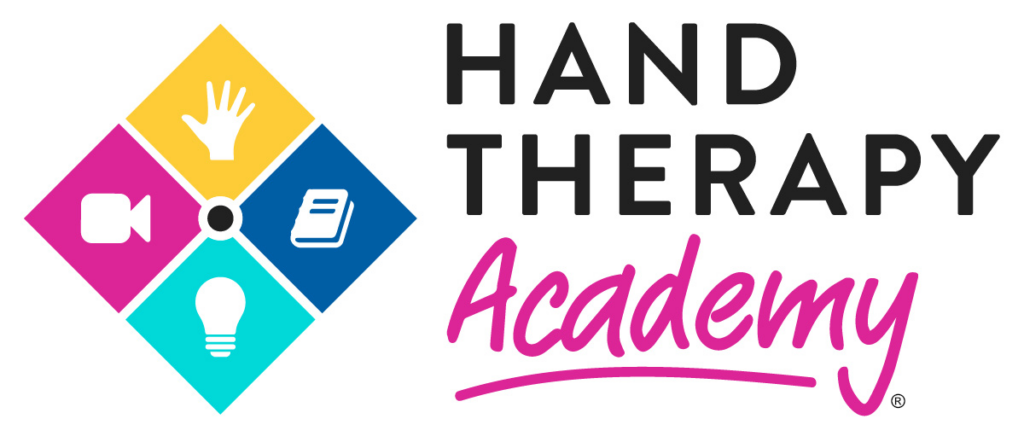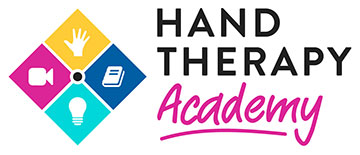Pediatric Hand Development as it relates to Hand Therapy
Filed under Uncategorized
Pediatric Hand Therapy and Hand Development
by Chelsea Gonzalez
It is essential to have an understanding of the major milestones of grasp and upper extremity development when working with younger kiddos so that therapy complements the changes naturally occurring in the brain at each age-level. It is important that babies and toddlers progress through each stage of hand development in a sequence so that neural pathways can be built for later in life. However, the timing of this progression can be flexible. The general progression (and timeline) of upper extremity development looks like this:
While a general understanding of developmental progression is essential, knowledge of more detailed milestones is important to have on hand for those times when a young patient schedules an evaluation. A few excellent overviews that we use:
- Gerber, Wilks & Erdie-Lalena (2010): https://pedsinreview.aappublications.org/content/31/7/267
- Children’s Hospital of Orange County: Fine Motor Skills: https://www.choc.org/userfiles/file/Rehab-Developmental%20Milestones%20final.pdf
- Centers for Disease Control and Prevention (also available in Spanish): https://www.cdc.gov/ncbddd/actearly/milestones/index.html
Assessment and treatment of pediatric patients in a hand setting requires knowledge of the developmental progression. If a stage is missed or underdeveloped because of an injury or condition, it is the therapist’s role to provide support in that area so future skills can continue to develop naturally.
If you see children in your practice, learn these milestones and become comfortable identifying them in children during the assessment process. It takes time and experience, so start practicing on kids you see in the community and in your daily life. Watching how kids move and how they use their hands is a great way to develop experience in identifying the skills and sequences of developmental milestone acquisition.
References:
Abzug, J., Kozin, S.H., & Neiduski, R. (2020) Pediatric hand therapy. St. Louis, MO: Mosby.
Case-Smith, J. and O’Brien, J.C. (2015). Occupational therapy for children and adolescents (7th ed.). St. Louis, MO: Mosby.
1 Comments
Leave a Comment
More To Read
Effects of different stretching techniques for improving joint range of motion.
Reference: Oba, K., Samukawa, M., Abe, Y., Suzuki, Y., Komatsuzaki, M., Kasahara, S., Ishida, T., & Tohyama, H. (2021). Effects of Intermittent and Continuous Static Stretching on Range of Motion and Musculotendinous Viscoelastic Properties Based on a Duration-Matched Protocol. International journal of environmental research and public health, 18(20), 10632. https://doi-org.libproxy.nau.edu/10.3390/ijerph182010632 The Skinny: This study used a cross-over…
Read MoreThe Use of Neuromuscular Electrical Stimulation with Upper Extremity Paralysis
The Use of Neuromuscular Electrical Stimulation with Upper Extremity Paralysis By: Mikayla Murphy Martin, R., Johnston, K., & Sadowsky, C. (2012). Neuromuscular electrical stimulation–assisted grasp training and restoration of function in the tetraplegic hand: A case series. The American Journal of Occupational Therapy, 66(4), 471-477. https://doi.org/10.5014/ajot.2012.003004 The Skinny The purpose of the study was to…
Read MoreSimple but Effective Ways Hand Therapists Address Psychosocial Impacts of Upper Extremity Injuries
Although psychosocial factors are often not formally assessed during an evaluation in those with upper extremity injuries, the therapist often informally assesses these during and after treatment sessions. Sustaining an upper extremity injury can be a physically and emotionally challenging experience. Beyond the physical pain and limitations, these injuries can profoundly impact an individual’s psychosocial…
Read MoreSign-up to Get Updates Straight to Your Inbox!
Sign up with us and we will send you regular blog posts on everything hand therapy, notices every time we upload new videos and tutorials, along with handout, protocols, and other useful information.






Thank you. What are the best assessment tools in your opinion other than clinical observation for neurological development of hands from birth until 14 months?